Japan counts many summer and winter festivals, each of them showcasing vivid traditional folklore, dances, and activities.
They give locals an occasion to gather, wear yukata, and eat out at food stalls.
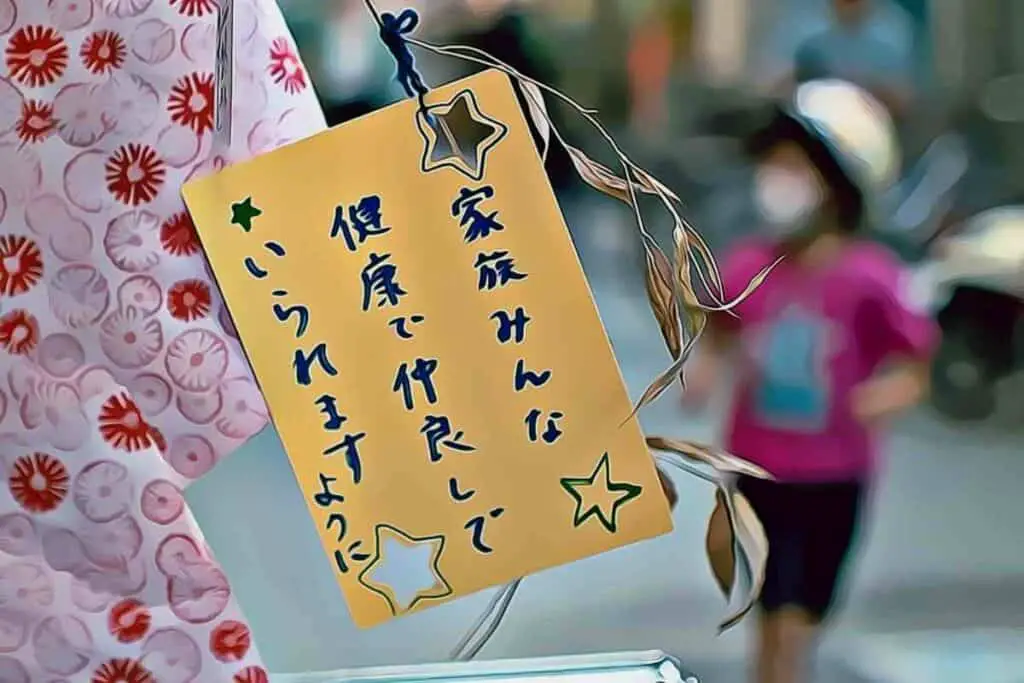
But there is one in particular that you should not miss if you are visiting Japan in summertime: the Star Festival (星祭りor Hoshi-matsuri) also called Tanabata Matsuri.
Table of Contents
What is the star festival in Japan?
The star festival takes place all around Japan on the 7th day of the 7th month each year. Also known as the “Tanabata festival” or “Hoshi-matsuri”, it is part of the Japanese folktales.
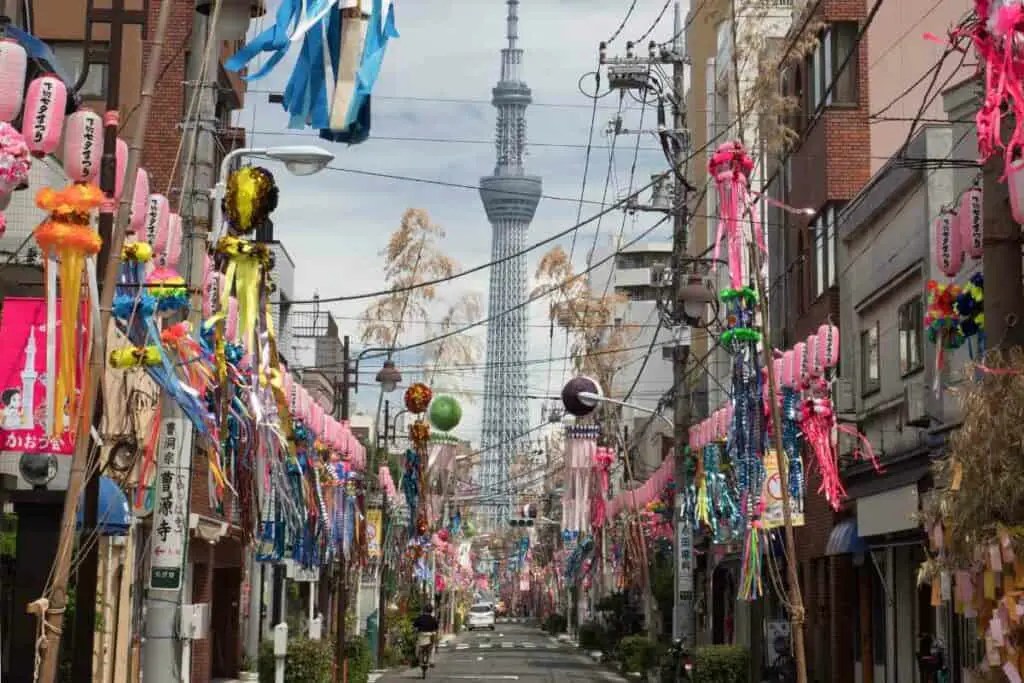
Visitors may come across several other names for this festival, as each city or area usually celebrates the star festival.
Although you may think this refers to the month of July for some regions of Japan, it refers to August because of the differences between the lunar and solar calendars.
Therefore, the star festival is held either on July 7th or August 7th, depending on the region. The Northern regions of Japan celebrate the star festival mostly in August.
The date it is held actually evolved across various centuries. During the earliest part of the Meiji Era, Japan celebrated the star festival in August.
However, in parallel to the introduction of the Gregorian calendar, the date was pushed forward to July 7th.
In the old days, the appearance of the two stars in the sky also signaled the start of a new agricultural season.
The History
Tanabata festival is one of five traditional festivals in Japan with origins in China, celebrated in the early days by the Imperial court during the Nara period (710 to 784).
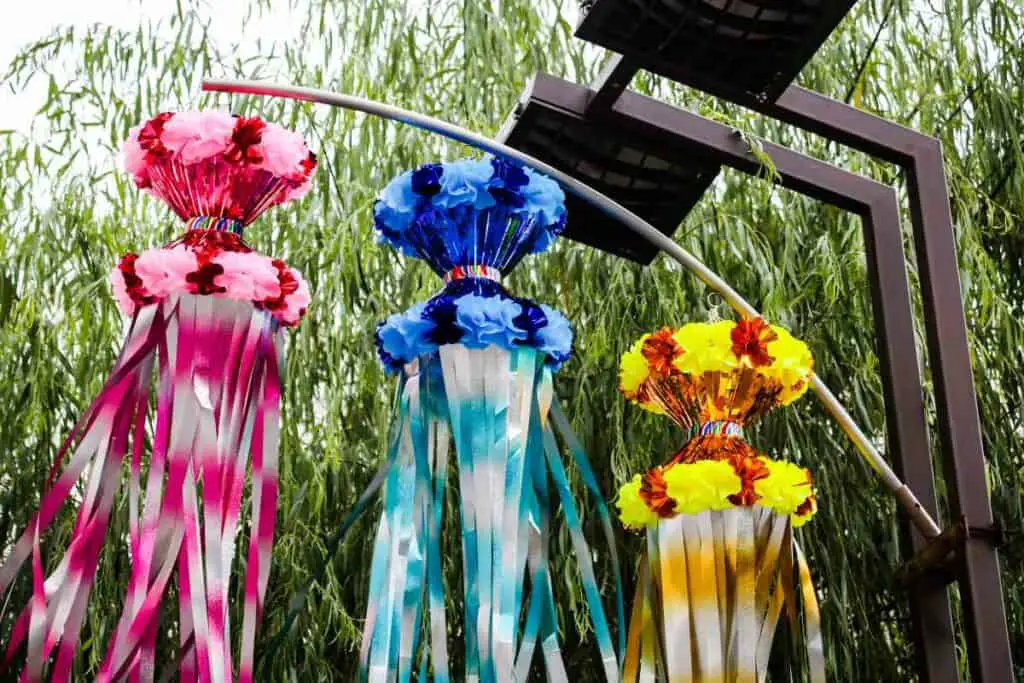
It was first introduced in Japan to the Imperial Palace, and later, during the Edo period, the general public adopted it.
During this time – Both tales and religious practices inspired by China entered Japan and slowly infused into the local cultural traditions.
The Chinese legend of the “weaver girl” merged with a Japanese folk tale “Tanabata- Tsume”, leading to a romance tale, in a similar style as Romeo and Juliet.
Tanabata, the star festival, is a tale of two lovers who separated on various grounds and transformed into stars Vega and Altair.
Inspired by the Chinese folklore story, there are two main characters in this story.
- One is Orihime, the weaving princess, daughter of Tentei
- and then there is Hikoboshi, the cowman
Some variations of this story also exist.
As Orihime spent much of her time weaving, she would not meet an appropriate partner, and her father arranged that she met Hikoboshi.
After they married, Tentei became infuriated at their new laziness and separated them across the Milky Way.
Booking.comUnable to meet again, except once a year, on the 7th of the 7th month, across the Milky Way.
The legend also tells of a bridge built by magpies, across the Milky Way, which can only appear on a dry July night. On rainy festival days, the legend tells that the birds could build no bridge.
On this particular day, Japanese people make a wish for the future. In ancient years, girls would wish for a better craft ability and men for better writing skills.
Top star festivals in Japan
There are many locations to attend the Tanabata festival in Japan. Here we take a look at the most interesting ones.
Among the star festivals in Japan, the most famous is the Sendai Tanabata Matsuri (festival)
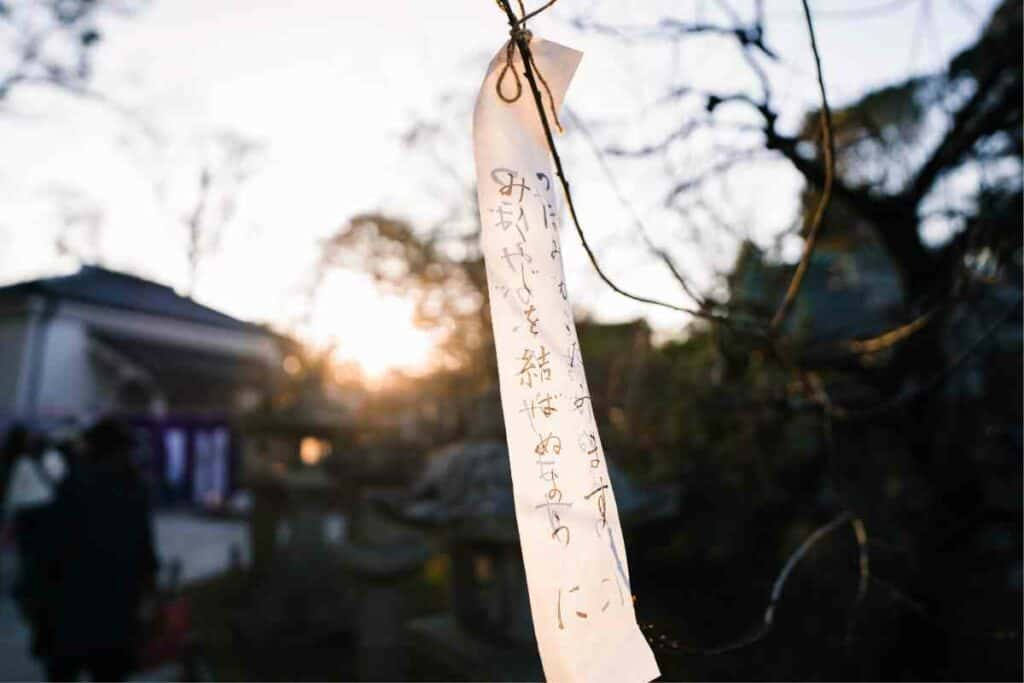
Held in Sendai, usually around August 6th to 8th, its celebration started in the 16th Century, during the Masamune warlord’s period.
Read Next ?
It became larger from the Edo period until the start of the Meiji Era.
It could have disappeared entirely if it was not for the work of Sendai volunteers following the end of WWI to revive it.
After World War II – Sendai held the Tanabata festival again, and it slowly became one of the major touristic festivals in the region.
As in other Japanese festivals, beautiful fireworks displays take place, usually on August 5th, each year.
Local traditions include seven kinds of decoration with separate symbolic meanings and make it a highlight of the Sendai star festival.
The Hiratsuka Tanabata festival in Kanagawa
This is one of the three largest star festivals, not only in the Kanto region but also in Japan.
It is held around July 7th, in the shopping streets around the main Hiratsuka station.
The streets are lined with more than 400 food stalls and the decorations are lit up, marking the arrival of summertime and the start of the festival season.
There are more than 500 large decorations in Hiratsuka’s main arcade, creating a magical atmosphere at night. Locals and tourists alike wear yukata to stroll around town.
If you are heading to Hiratsuka, it is easy to confirm the exact festival dates through the municipal website. In 2022, the festival took place from July 8th to July 10th.
Booking.comThe Osaka Tennoji ‘Tanabata no Yube’ Star Festival
“Tanabata no Yube” is one of Osaka’s most famous Tanabata festivals. Decorations and ornaments play a crucial role in the festival, filling it with a beautiful and joyful atmosphere.
In ancient times, once the festival finished, ornaments would be thrown into the river to be washed away.
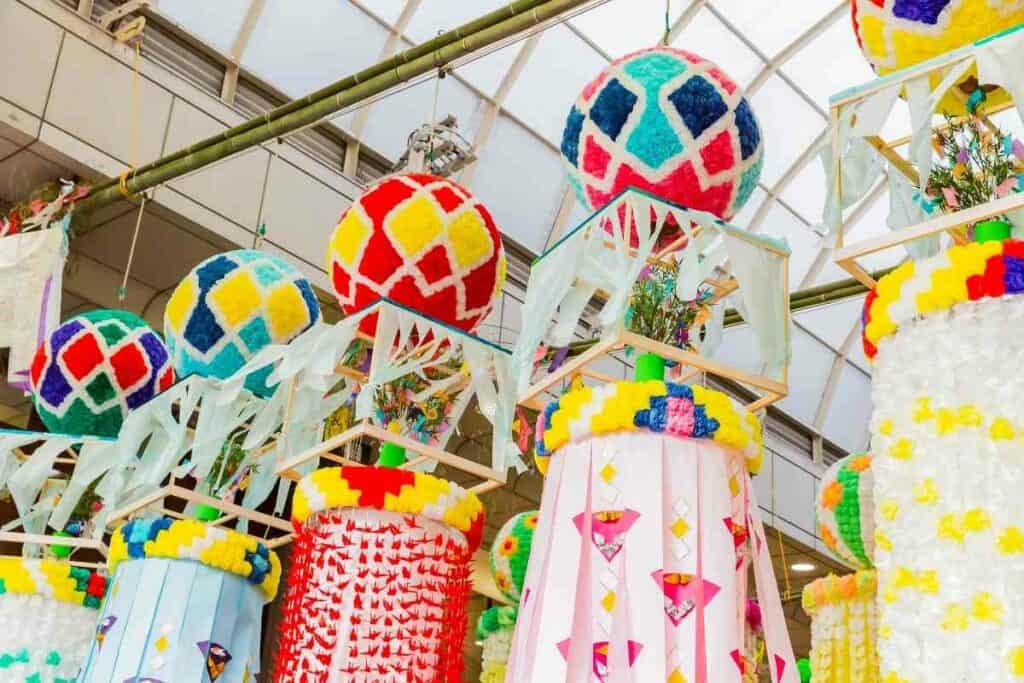
However, nowadays, they are usually burnt at the end of the year. This change is actually mostly due to ecological concerns.
In Shin Tennoji temple, Tanabata no Yube takes place from August 6th to August 8th.
Usually, food stalls close around 9 pm, and visitors move to other Osaka locations, such as the Umeda Sky Building Tower.
Osaka Tennoji celebrations are famous for their decorations, made to impress, symbolizing the Milky Way, with hundreds of LED lights paving the path.
In addition to the traditional Tanabata festival customs and decorations, Tennoji also offers unique activities.
For Example – Visitors can gaze at the stars through dedicated telescopes. There are also concerts and a large bonfire on the last day of the festival.
If you are visiting Nara on these days, please also check out the Nara Palace Site
In August 2022, Nara held a very special star festival: the Tenpyo Tanabata Hejjokyo.
With more than 8000 candles lit at the Nara Palace site, the festival attempted to revive the atmosphere of the Milky Way in the Tanabata folktale.
How to celebrate the festival like a local
There are some similarities between all Tanabata festivals across Japan and some specific characteristics too.
The large paper decorations hanging on shopping malls, trees, and the light-ups at night are the major highlights of the star festival.
The local customs are to attach items to bamboo sticks, such as “Tanzaku”, “Fukinagashi” or “Orizuru”.
Tanzaku refers to wishes written on colored paper pieces, catching the wind, and thereby communicating wish messages to the gods.
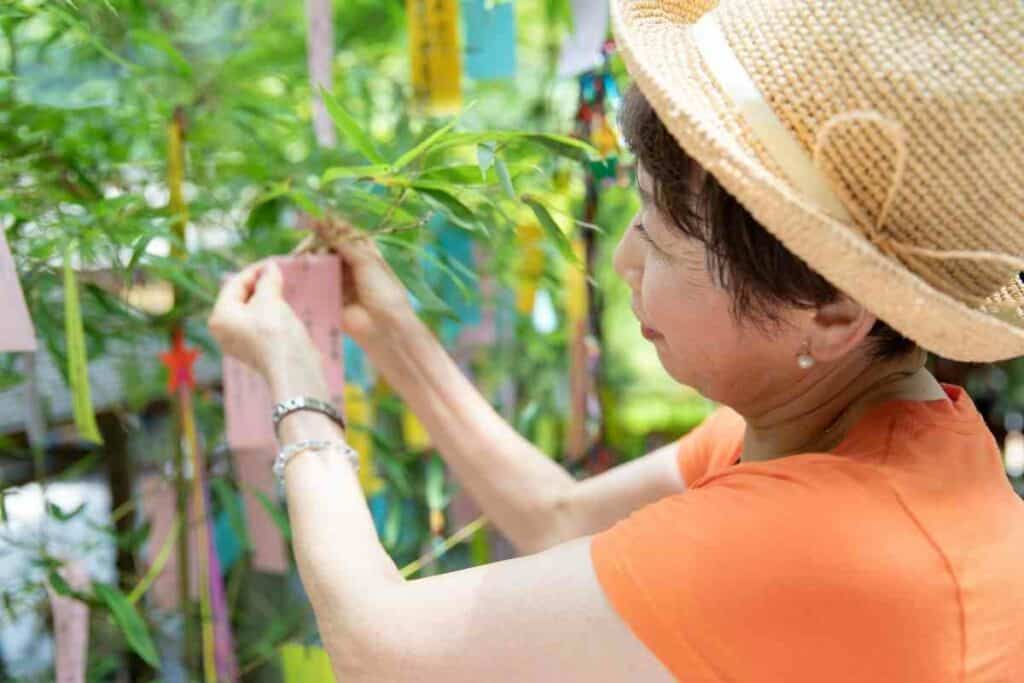
In Hiroshima, once the star festival is over, all the Tanzaku are stored and burned at the New Year.
Read later – 10 Best New Year Celebrations In Japan
Fukinagashi refers to long tubes of paper, with a length of up to 5 meters, also catching the wind.
Finally, Orizuru refers to the origami paper cranes folded as a symbol of peace, hope, and good luck. Cranes are also a symbol for origami folding in general.
Nowadays, LED lights also often represent the Milky Way, with paved blue light displays. This is the case in Hiroshima, but also in Sendai, and Osaka Tennoji festivals.
The authentic local food for this festival is “Hiyashi Somen” a slim white noodle dish that looks like weaver’s threads.
This is a cold dish, served with Tsuyu dipping sauce on a bed of ice cubes. It is the perfect dish for hot humid summer days and reminds locals of the Milky Way and the fragile balance of the Tanabata folktale.
What to Expect from the Festival
Star festivals also often involve contests, games, and parades, in a festive atmosphere, as well as food stalls across main shopping streets.
In Osaka, local food specialties such as okonomiyaki are served along with Somen.
It is interesting to note that there is also a traditional song, specific to the star festival: the Tanabata song.
This is a song popular for children, with reference to the stars shining in the sky.
You can find several versions on YouTube, and it is an easy song to learn for Japanese language learners too.
Whether you are visiting Sendai, other cities in Kanto, or Kansai in summer, you may come across Tanabata festivals.
As a festive tradition, involving songs, dances, parades, and food, it is a true Japanese local custom and an occasion to wear a yukata.
Conclusion
So get ready to attend a Star Festival in Japan and wish for anything you desire! If you cannot travel to Japan, there are also Tanabata festivals (Star Festivals) overseas, for example in Los Angeles.
- 12 Things Tourists Should NEVER Say in Japan
- Kissing Robot: Exploring the Popularity of the Chinese Kissing App
- Unlocking the Secret Dating Rituals Only Locals Know in Japan
- Samurai Armor: Ancient Protection for Japan’s Elite Warriors
- 10 Amazing Facts About Schools in Japan: Unique Traditions and Educational Practices
- Where can you see snow monkeys in Japan: Best locations and viewing tips









